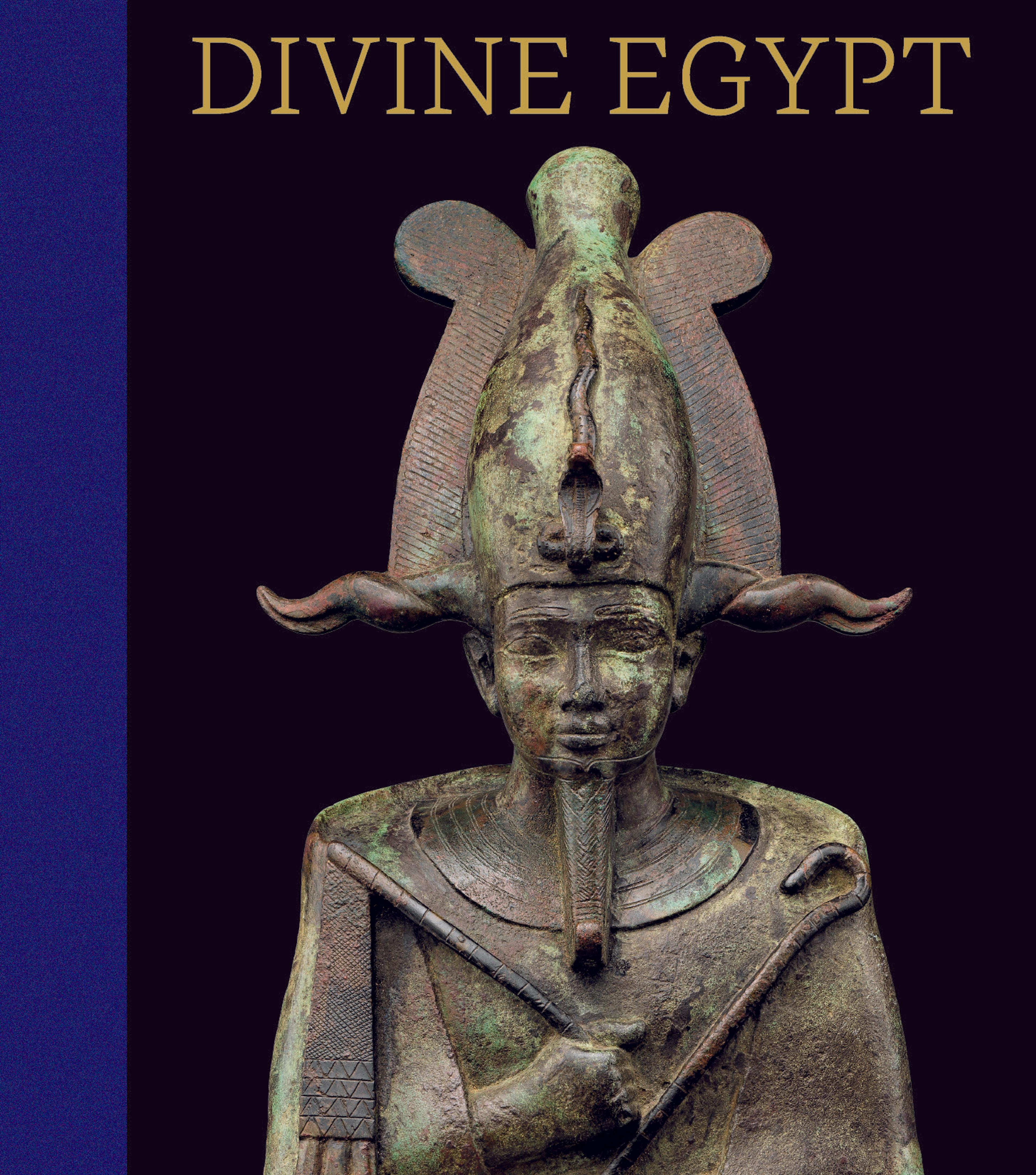Uraeus
The cobra represents the goddess Wadjet, a very ancient goddess who is associated with royalty. When the snake is worn over the king's brow, its head raised and hood dilated ready to attack if needed, it is called a uraeus. The uraeus constitutes the consummate symbol of royalty. As time passes it is also worn by royal women and certain gods.
This uraeus is assembled from hammered gold and electrum sheets and strips; the snake's head and hood form one component, which was inserted into the coils and tail that form a second. The separate head element and inlays of the first component are now missing.The uraeus hood was probably originally inlaid in colors of red, turquoise, and dark blue. Traces of Egyptian blue suggest that material may have been used for some of the inlays. The long shallow curve of the tail would seem to suit a funerary mask, but the uraeus had been deformed and was restored, so the shape is not original.
The uraeus was said at the time of acquisition to be from Tanis, capital and burial site of the Third Intermediate Period kings of Dynasty 22. This seems likely for a number of reasons, but cannot be confirmed. The relevant royal tombs were excavated just prior to World War II, but none of the excavation records document this piece.
This uraeus is assembled from hammered gold and electrum sheets and strips; the snake's head and hood form one component, which was inserted into the coils and tail that form a second. The separate head element and inlays of the first component are now missing.The uraeus hood was probably originally inlaid in colors of red, turquoise, and dark blue. Traces of Egyptian blue suggest that material may have been used for some of the inlays. The long shallow curve of the tail would seem to suit a funerary mask, but the uraeus had been deformed and was restored, so the shape is not original.
The uraeus was said at the time of acquisition to be from Tanis, capital and burial site of the Third Intermediate Period kings of Dynasty 22. This seems likely for a number of reasons, but cannot be confirmed. The relevant royal tombs were excavated just prior to World War II, but none of the excavation records document this piece.
Artwork Details
- Title: Uraeus
- Period: Third Intermediate Period
- Dynasty: Dynasty 22
- Date: ca. 945–712 BCE
- Geography: From Egypt; Possibly from Eastern Delta, Tanis (San el-Hagar)
- Medium: Gold, electrum
- Dimensions: as mounted: L. 29.5 × W. 6.1 × Th. 1.0 cm (11 5/8 × 2 3/8 × 3/8 in.)
- Credit Line: Purchase, Joseph Pulitzer Bequest, 1950
- Object Number: 50.198.3
- Curatorial Department: Egyptian Art
More Artwork
Research Resources
The Met provides unparalleled resources for research and welcomes an international community of students and scholars. The Met's Open Access API is where creators and researchers can connect to the The Met collection. Open Access data and public domain images are available for unrestricted commercial and noncommercial use without permission or fee.
To request images under copyright and other restrictions, please use this Image Request form.
Feedback
We continue to research and examine historical and cultural context for objects in The Met collection. If you have comments or questions about this object record, please complete and submit this form. The Museum looks forward to receiving your comments.
